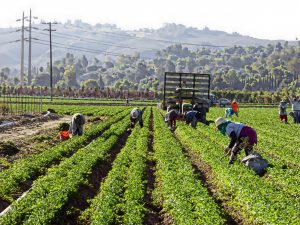Bedford, Mass., July 08, 2022 (GLOBE NEWSWIRE) — Conagen, the Massachusetts–based biotech firm, announced the commercialization of an expansive portfolio of natural sweetness enhancers for taste modification in sugar reduction solutions for food and beverages. The enhancers are made with precision fermentation, a technology that has led to the innovation of an extensive platform of phenolic antioxidants.
Sweetness enhancers in the market today are made by chemical synthesis or by using an organic solvent extraction method, both of which are time–consuming, labor–intensive, and environmentally unfriendly. Conagen's precision fermentation method is a preferred, clean, and sustainable method for developing sweetness enhancement compounds.
"These unique molecules are yet another example of how Conagen leverages its molecular platforms and precision fermentation capabilities to create useful ingredients for food and beverage applications. Our ability to rapidly scale modern, clean and sustainable sweetness enhancers provides additional and better options for taste modulation and sugar reduction beyond those enabled by the non–caloric sweeteners already on the market," said Casey Lippmeier, Ph.D., vice president of innovation at Conagen.
Conagen's sweetness enhancers belong to a group of natural product molecules called phenolic compounds, found extensively in many plant species. Phenolic compounds are commonly found in vegetables and fruits and are a significant part of the human diet. They are biosynthesized by plants and lichens as secondary metabolites and comprise a diverse group of phytochemicals.
Increasing consumer awareness of chronic diseases such as obesity and diabetes sparks the market pull trend toward zero sugar and low–to–no calorie food and beverages and is expected to continue upward. The health trend drives the growth in new sweetness enhancer technologies for an ever–demanding sugar reduction solutions market. Consumers are seeking ways to improve their diets and are increasingly interested in natural and clean ingredients.
Conagen and its pipeline partner Sweegen, a global leader in wellness–based sugar reduction solutions, have previously teamed up to develop modern natural sweeteners that can replace up to 100% sugar in particular food and beverage applications and bitter blockers to mitigate up to 80–100% bitterness in consumer trending products, such as energy drinks, sauces, and confectionery products with low to no sugar.
"Together, with Conagen, we're building a bridge of natural solutions with mainstream taste," said Casey McCormick, head of global innovation at Sweegen. "These new molecules can modulate mouthfeel and boost the sensation of the sweetness of other sweeteners and flavors in food and beverages, leading to a significant reduction in sugar usage."
McCormick further stated, "Conagen is an ideal innovation partner for Sweegen to continuously build our robust and powerful portfolio and pair it with our first–class sweetener systems. The more sweetness enhancers in our toolbox, the better our exploration and discovery of new ways for food and beverage brands to make healthier products that taste great and resonate with consumers."
Sweegen has a long–standing partnership with biotechnology innovator Conagen. Conagen focuses on developing sustainable, nature–based ingredients that improve existing options in the market or represent completely novel ingredient solutions.
###
About Conagen
Conagen is a product–focused synthetic biology R&D company with large–scale manufacturing capabilities. Our scientists and engineers use the latest synthetic biology tools to develop high–quality, sustainable, nature–based products by precision fermentation and enzymatic bioconversion. We focus on the bioproduction of high–value ingredients for food, nutrition, flavors and fragrances, pharmaceutical, and renewable materials industries. www.conagen.com
About Sweegen
Sweegen provides sweet taste solutions for food and beverage manufacturers around the world.
We are on a mission to reduce the sugar and artificial sweeteners in our global diet. Partnering with customers, we create delicious zero–sugar products that consumers love. With the best modern sweeteners in our portfolio, such as Bestevia Rebs B, D, E, I, M, and N, and brazzein, along with our deep knowledge of flavor modulators and texturants, Sweegen delivers market–leading solutions that customers want, and consumers prefer. Well. Into the Future.
For more information, please contact info@sweegen.com and visit Sweegen's website, www.sweegen.com.
Attachments
- Conagen's sweetness enhancers are ideal for sugar reduction solutions in food and beverages.
- Sweegen has a long–standing partnership with biotechnology innovator Conagen.







